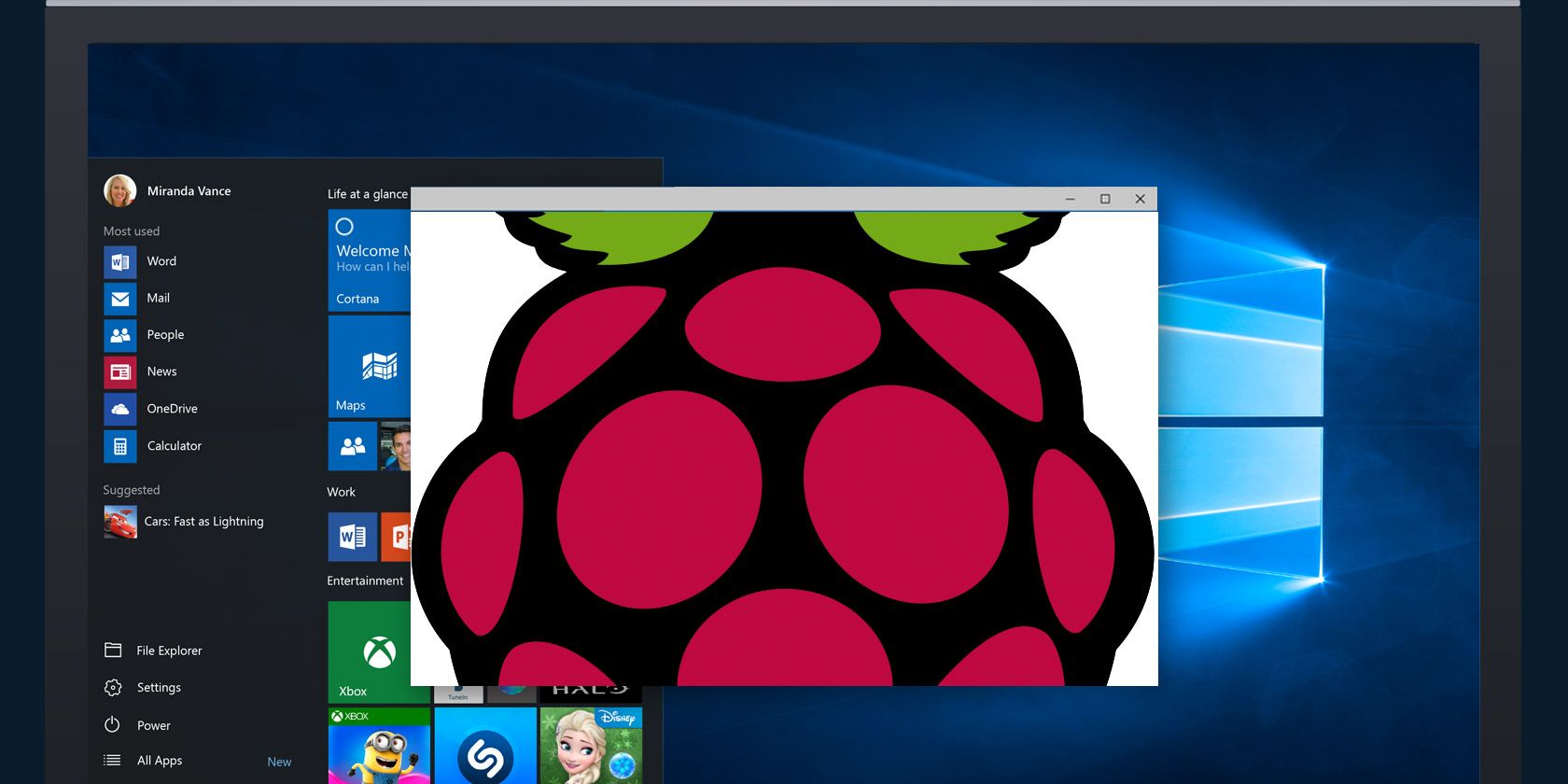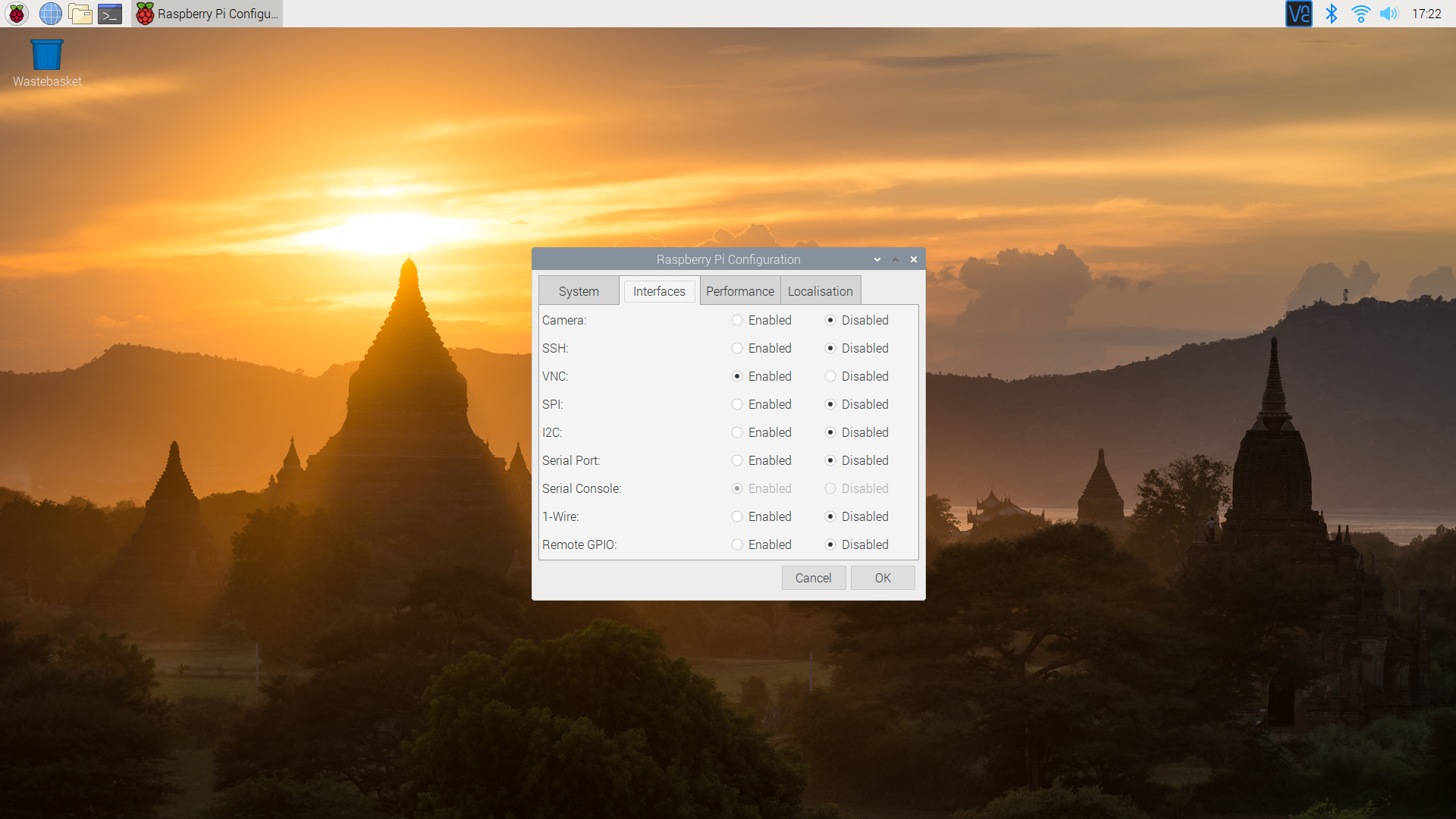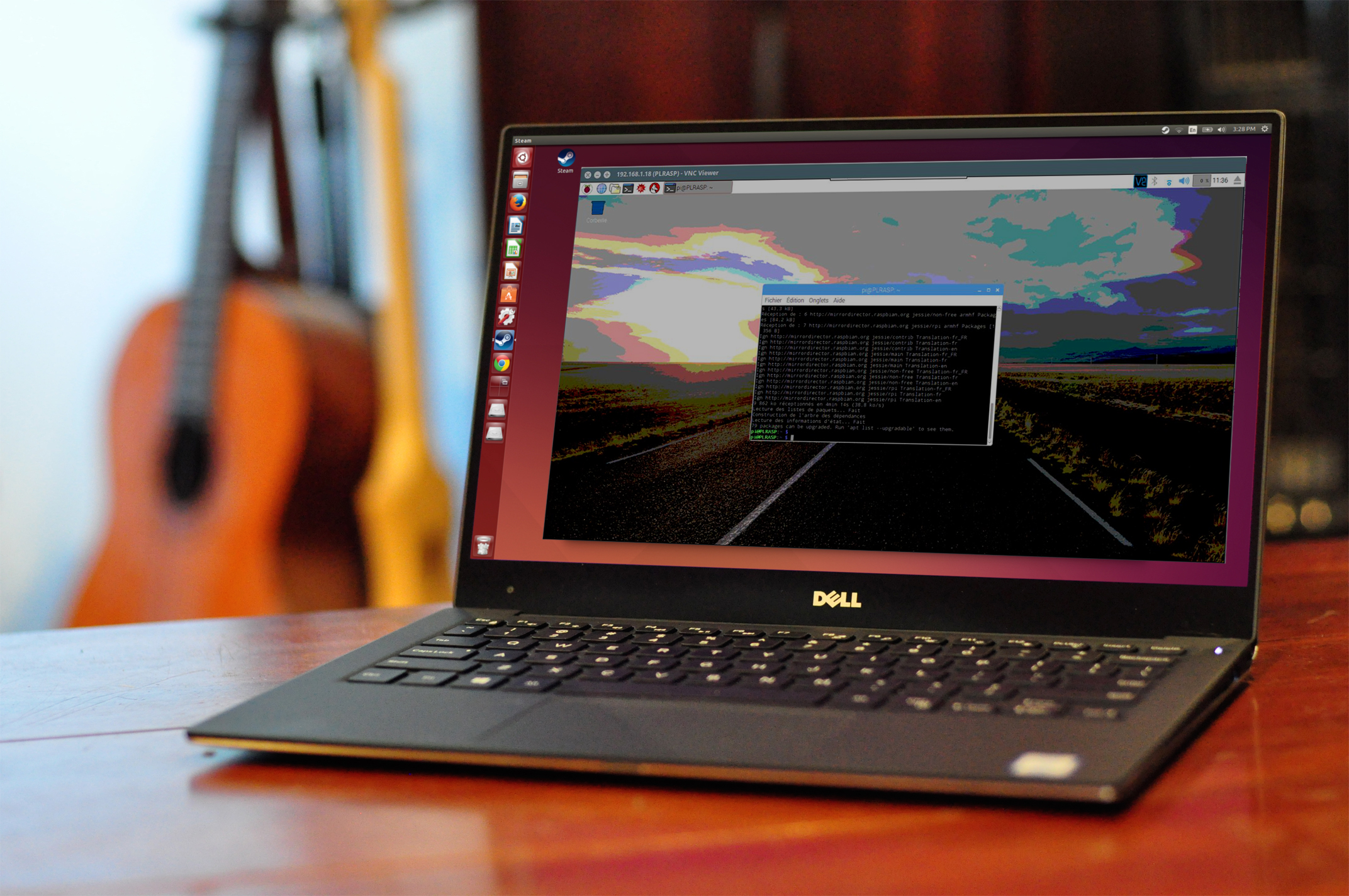IoT Remote VNC Raspberry Pi Download - Easy Access
Have you ever wished you could get to your Raspberry Pi or other smart gadgets from anywhere, without needing to be right there? It's a pretty common thought, isn't it? Well, what if I told you that connecting to these devices, even if they are tucked away behind a home network or a business firewall, is becoming much simpler? We're talking about a way to see and control your little computers and smart things as if you were sitting right in front of them, no matter where you happen to be.
This idea of reaching out and touching your devices from far away, especially with tiny computers like the Raspberry Pi, is truly changing how people work with their technology. It is, in a way, a huge step forward. You get to access files, run programs, and sort out any little glitches, all without having to be physically next to the machine. Think of the freedom that brings, the sheer convenience of managing things from your comfy chair, or even when you are out and about. It's quite a neat trick, actually.
So, if you are keen to learn about how this all works, particularly with options for getting the right tools, you are in the right spot. We are going to explore how connecting to your smart devices using a visual link, like VNC, really helps. This guide will gently show you how to set things up and start using these clever ways to connect. It is a simple path to more control over your small but mighty machines, allowing you to get things done with ease, you know?
- 607 Unc Net Worth
- Abby Rose Bio
- 25 Money Secrets From Donald Trump Pdf
- 51%C3%A5%C6%92%C3%A7%C5%93%C3%A5%C3%A5
- How Old Is Goldie Hawn
Table of Contents
- What Does Remote Access for Your IoT Devices Mean?
- Getting Your Raspberry Pi Ready for Remote VNC
- How Can You Reach Your IoT Device Behind a Network Wall?
- Setting Up Your Computer for IoT Remote VNC Raspberry Pi Download
- Keeping Your IoT Devices Safe While Connected
- Why is Remote Control with IoT and VNC Such a Big Deal?
- Using Different Ways to Connect to Your IoT Remote VNC Raspberry Pi Download
- Getting Started with Your IoT Remote VNC Raspberry Pi Download
What Does Remote Access for Your IoT Devices Mean?
Connecting to your Raspberry Pi or other smart gadgets from a distance means you can see what is happening on their screens and use them just as if you were sitting in front of them. This is often done using something called VNC, which stands for Virtual Network Computing. It lets you have a visual desktop experience, so you can open applications, move files, and basically do anything you would do if you had a monitor, keyboard, and mouse hooked up directly. This is very helpful for anyone with devices in hard-to-reach places or for those who just want the convenience of working from anywhere, really.
The idea of remote access is not new, but when you bring it together with small, powerful devices like the Raspberry Pi, it opens up a lot of new possibilities. Imagine having a tiny computer running a home automation system, and you need to tweak a setting while you are away. Remote VNC makes that simple. Or perhaps you have a small sensor network, and you need to check its data. Being able to connect from afar saves a lot of time and effort. It is a pretty handy feature, in a way, for managing your collection of smart things.
This capability also extends to other tiny Linux computers, such as the NVIDIA Jetson Nano or Google Coral. So, the methods we discuss here are not just for the Raspberry Pi. They apply to a whole family of embedded Linux devices. This means that if you learn how to set up IoT remote VNC for a Raspberry Pi, you are more or less ready to tackle similar setups for other little machines too. It is quite versatile, you know?
- Aaron Carter P Diddy
- 2 Babies One Fox
- Abby And Brittany Hensel Latest News
- Jayne Marie Mansfield
- 130 Pounds In Kg
Getting Your Raspberry Pi Ready for Remote VNC
Before you can connect to your Raspberry Pi from somewhere else, you need to get it set up properly. This involves a few initial steps to make sure it is ready to accept a remote connection. First off, you will want to make sure your Raspberry Pi has its basic setup done. This includes getting it connected to your Wi-Fi network, which is a pretty common starting point for most projects. Making sure it has a good internet connection is, of course, a vital first move.
Once your Pi is online, the next step usually involves installing the necessary software that lets it share its screen. There are different tools for this, but many people use VNC server software on the Raspberry Pi itself. This software listens for incoming connections and then sends what is on the Pi's screen over to your computer. It is almost like setting up a tiny, invisible camera that broadcasts its view to you. This preparation is quite important for a smooth experience later on, you see.
For those just starting with a brand-new Raspberry Pi, getting it ready might mean putting an operating system on it and then doing the initial configuration. This can feel a little like building a tiny computer from scratch, but it is typically a straightforward process. You might use a tool like Raspberry Pi Imager to put the operating system onto a memory card, and then just pop it into your Pi. From there, you can usually follow on-screen prompts or simple guides to get it online and ready for the next steps in setting up your IoT remote VNC Raspberry Pi download. It is not as tricky as it might sound, actually.
How Can You Reach Your IoT Device Behind a Network Wall?
One of the trickier parts of connecting to devices like your Raspberry Pi from afar is dealing with firewalls or network address translation (NAT) routers. These are like security guards for your home network, keeping unwanted visitors out. While they are great for keeping things safe, they can also make it tough to connect to your Pi from outside your home. So, how do you get past them without weakening your network's defenses? This is where some clever solutions come into play, allowing your IoT remote VNC Raspberry Pi download to work its magic.
There are a few different ways to make your Raspberry Pi reachable. One common method involves setting up a Virtual Private Network (VPN). This creates a secure tunnel through the internet, making it seem like your remote computer is actually on the same local network as your Pi. It is a bit like having a secret passage that only you can use. This approach is generally quite secure and effective, offering a good way to bypass those network barriers, you know?
Another option is to use services that are built specifically for this kind of remote access. Some services, like RealVNC's cloud VNC viewer, provide a way for your Pi to connect out to their service, and then you connect to their service to reach your Pi. This means you do not have to mess with your home router's settings. Similarly, Raspberry Pi Connect offers a free screen sharing and remote shell service that simplifies this process a lot. These services act as a bridge, making the connection much easier to establish without needing to open up specific ports on your router, which is often a concern for security, you see.
For those who want even more control or need to send commands from a web portal, there are solutions like SocketXP. This kind of tool can help you access the visual screen of your IoT device or Raspberry Pi without needing to figure out its specific network address or change any firewall settings. It is designed to wrap all your data, making it seem like your Pi is directly on your local network, no matter where you are. This can be very useful for more complex setups or for managing a group of devices, too.
Setting Up Your Computer for IoT Remote VNC Raspberry Pi Download
Once your Raspberry Pi is ready to be accessed, you need to prepare the computer you will be using to connect to it. This is usually your laptop or desktop PC, perhaps running Windows. To see and control your Raspberry Pi's screen, you will need a special piece of software called a VNC client. This client is what receives the visual information from your Pi and lets you send your mouse and keyboard actions back to it. It is the window through which you view and interact with your remote device, you might say.
A popular choice for Windows users is the TightVNC client. Installing this on your laptop or PC is typically a straightforward process. You download the program, run the installer, and follow the simple steps. Once it is installed, you will open it up and tell it the address of your Raspberry Pi. If you are using a service like Pinggy, they might give you a public web address to enter into your VNC viewer. This address is what helps your client find your Pi out on the internet. It is all pretty logical, really.
The client software is designed to be user-friendly, so even if you are not a computer expert, you should find it easy to get going. It handles the technical bits of sending and receiving the screen data, leaving you to focus on what you want to do on your Raspberry Pi. This setup means that with just a few clicks, you can have your Pi's desktop right there on your main computer screen, ready for you to use. It is a very convenient way to work, you know?
Keeping Your IoT Devices Safe While Connected
When you open up your Raspberry Pi or other IoT devices to remote access, thinking about security becomes quite important. You want to be able to connect from anywhere, but you certainly do not want just anyone else to be able to connect too. So, how do you make sure your smart devices are protected from unwanted attention, even when they are accessible over the internet? This is a key part of setting up your IoT remote VNC Raspberry Pi download safely.
One good step is to make your IoT device almost impossible for general scans to find. These scans are like automated sweeps of the internet, looking for open doors. By using services that wrap your data or create secure tunnels, your device can appear virtually invisible to these common scans. This helps protect against things like denial-of-service (DDoS) attacks, which try to overwhelm your device with too much traffic. It is a bit like having a secret knock to get into a club, rather than leaving the door wide open, you see.
Using strong passwords for your VNC and SSH connections is also a must. Never use the default passwords that come with your devices. Always change them to something unique and hard to guess. Also, whenever possible, use encrypted connections, like those provided by VPNs or secure remote access services. These methods scramble your data as it travels across the internet, making it very difficult for anyone to snoop on what you are doing. Taking these steps helps keep your remote connections private and your devices secure, which is pretty essential, actually.
Why is Remote Control with IoT and VNC Such a Big Deal?
The coming together of smart devices (IoT) and the ability to control them from afar, especially using VNC on something like a Raspberry Pi, is truly changing how we interact with technology. This is not just a passing trend; it is a fundamental shift in how we approach our digital tools. It offers access, adaptability, and command like never before. The simple fact that you can get to your files, run programs, and fix problems without being physically present is, in some respects, a game-changer for many people.
Think about the everyday uses. For home automation, you could adjust your smart thermostat or check your security cameras from your phone while you are at work. For professional system management, you could reboot a server or update software on a remote device without having to drive to a data center. This setup provides a lot of room to move, good safety features, and the ability to grow with your needs. It is pretty amazing how much control it gives you, you know?
This approach means you are no longer tied to the physical location of your devices. It frees you up to manage things from anywhere with an internet connection. Whether it is a single Raspberry Pi running a small project or a whole fleet of IoT devices spread across different locations, the ability to connect remotely makes management so much more efficient. It is a very practical solution for modern living and working, too.
Using Different Ways to Connect to Your IoT Remote VNC Raspberry Pi Download
Beyond just VNC, there are other ways to connect to your Raspberry Pi and IoT devices from a distance. One of the most common is SSH, which stands for Secure Shell. While VNC gives you a visual desktop, SSH gives you a text-based command line. This is incredibly powerful for sending instructions, running scripts, or managing your device without the overhead of a full graphical interface. Many people find SSH to be their go-to for quick tasks or for automating things on their Pi, as a matter of fact.
The

How to Run a Remote Desktop on Raspberry Pi with VNC

VNC: Remote access a Raspberry Pi — Raspberry Pi Official Magazine

Remote control your Raspberry Pi from your PC with VNC! – Howto